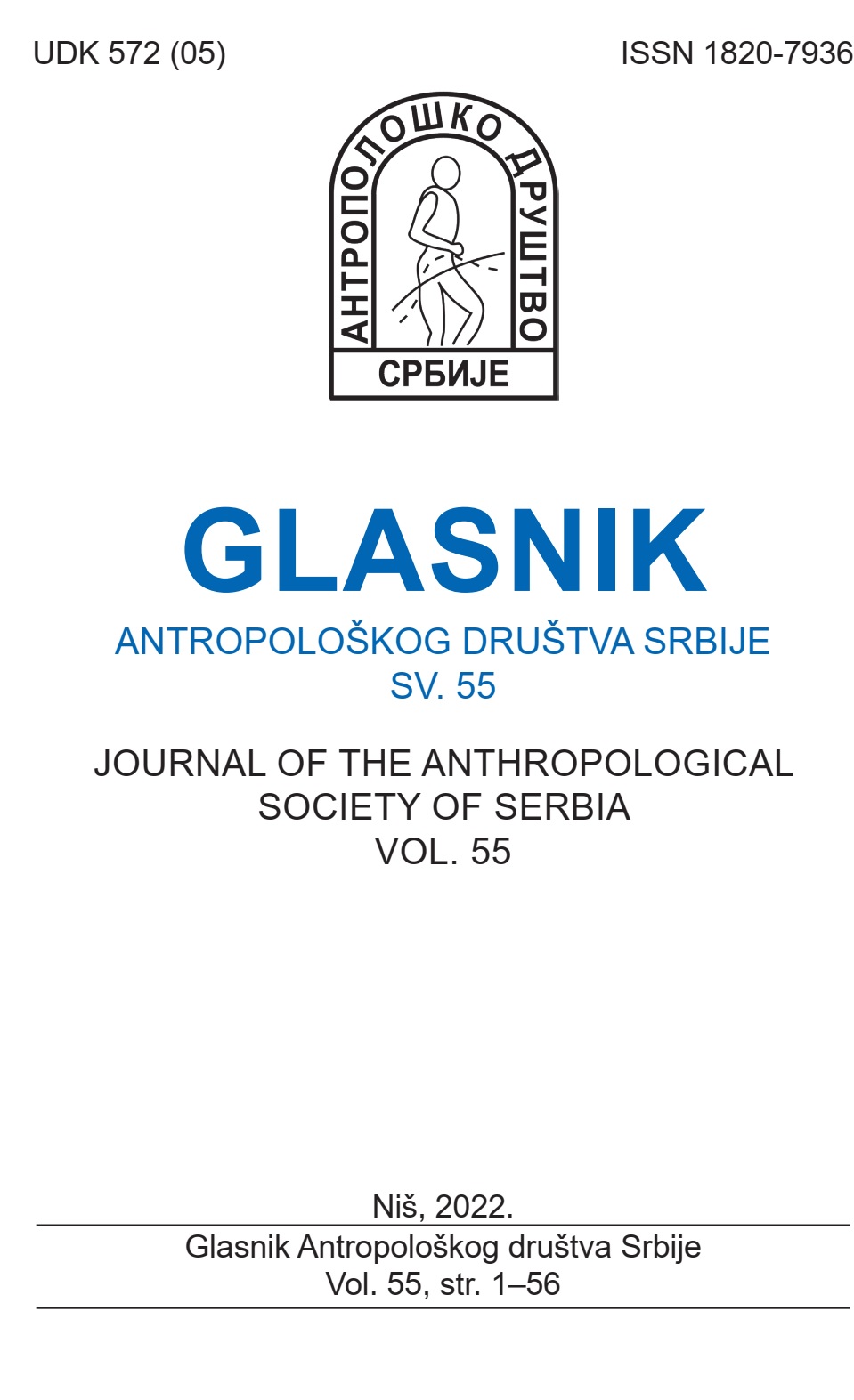THE INFLUENCE OF HAND DOMINANCE, HAND WASHING AND SAMPLING TECHNIQUE ON QUANTITY OF DNA RECOVERED FROM HANDLED PLASTIC TUBES
Sažetak
There are several previously published studies suggesting that different people deposit different quantities of their own DNA on items they handled, so can be considered good or bad shedders. The goal of this study was to investigate the amount of DNA deposited on sterile plastic tubes handled by the employees in our lab for 15 seconds. In particular, we wanted to test if there are differences in the amount of DNA deposited by dominant versus non-dominant hand. Moreover, we investigated the amount of DNA deposited before, immediately after and 30 minutes after hand washing. In the end, this study compared two sampling techniques, namely wet and dry swabbing, aiming to define the technique that guarantees better recovery of touch DNA. A samples were collected from 6 individuals and analyzed for differences in DNA quantity between the two hands of the same individual, but also between different individuals and different sampling techniques. In general, our preliminary results have shown that there are no differences between dominant vs nondominant hand. Consistent differences were observed between individuals regarding their ability to deposit biological material on handled objects. Sampling technique was factor that significantly influenced the amount of recovered DNA, suggesting that wet swabbing recovered higher DNA amounts compared to dry swabbing. Hand washing can be considered efficient anti contaminant measure as it significantly reduces the amount of biological material deposited on handled object. Further studies are needed to confirm our findings, especially those considering quantification of DNA deposited by individuals for prolonged period of time.
Reference
Breathnach, M., Williams, L., McKenna, L., Moore, E. (2016). Probability of detection of DNA deposited by habitual wearer and/or the second individual who touched the garment. Forensic Sci Int Genet, 20,53–60.
Burrill, J., Daniel, B., Frascione, N. (2019). A review of trace “Touch DNA” deposits: Variability factors and an exploration of cellular composition. Forensic Sci Int Genet, 39,8–18.
Budowle, B., Eisenberg, A.J., van Daal, A. (2009). Validity of low copy number typing and applications to forensic science. Croat Med J, 50:207-217.
Daly, D., Murphy, C., McDermott, S.D. (2012). The transfer of touch DNA from hands to glass, fabric and wood. Forensic Sci Int Genet, 6,41-46.
Djuric, M., Varljen, T., Stanojevic, A., Stojkovic, O. (2008). DNA typing from handled items. Forensic Sci Int Genet, 1:411–412.
Kamphausen, T., Schadendorf, D., von Wurmb-Schwark, N., Bajanowski, T., Poetsch, M. (2012). Good shedder or bad shedder-the influence of skin diseases on forensic DNA analysis from epithelial abrasions. Int J Legal Med, 126:179-183.
Locard, E. (1930). The analysis of dust traces. Part 1. Am J Police Sci, 1,276–298.
Lowe, A., Murray, C., Whitaker, J., Tully, G., Gill, P. (2002). The propensity of individuals to deposit DNA and secondary transfer of low level DNA from individuals to inert surfaces. Forensic Sci Int, 129,25–34.
Pang, B.C.M., Cheung, B.K.K. (2007). Double swab technique for collecting touched evidence. Leg Med, 9,181–184.
Phipps, M., Petricevic, S. (2007). The tendency of individuals to transfer DNA to handled items. Forensic Sci Int, 168:162–168.
Sessa, F., Salerno, M., Bertozzi, G., Messina, G., Ricci, P., Ledda, C., Rapisarda, V., Cantatore, S., Turillazzi, E., Pomara, C. (2019). Touch DNA: impact of handling time on touch deposit and evaluation of different recovery techniques: An experimental study. Nature Sci Rep, 9,9542-9551.
Sołtyszewski, I., Szeremeta, M., Skawrońska, M., Niemcunowicz-Janica, A., Pepiński, W. (2015). Type ability of DNA in touch traces deposited on paper and optical data discs. Adv Clin Exp Med, 24,437–440.
Wickenheiser, R.A. (2002). Trace DNA: a review, discussion of theory, and application of the transfer of trace quantities of DNA through skin contact. J Forensic Sci, 47,442–450.
Zoppis, S., Muciaccia, B., D’Alessio, A., Ziparo, E., Vecchiotti, C., Filippini, A. (2014). DNA fingerprinting secondary transfer from different skin areas: Morphological and genetic studies. Forensic Sci Int Gen, 11:137–143.

